Toyota Mirai (JPD10)
Compact SedanProduct Gallery
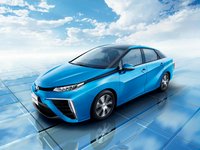
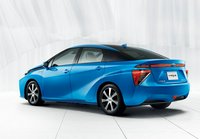
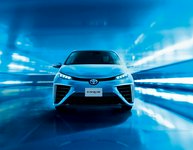
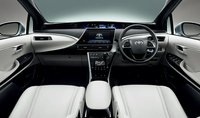
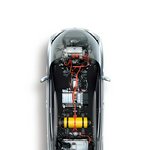
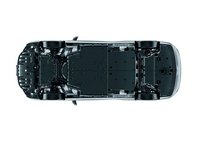
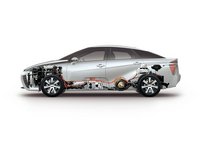
Product Overview
Toyota Mirai (code JPD10) is the world's first commercially-available hydrogen fuel-cell vehicle in sedan form in production from 2014 to 2020. It has a small 1.6kWh Nickel-metal hydride battery and a small 113kW electric motor powered by electricity generated by the fuel cell.
Design-wise, many consider the Mirai a failure. Indeed, Toyota might have been better off if the first fuel cell vehicle were an exciting roadster, for which range was not an issue: While the Mirai had excellent range, there simply weren't many hydrogen fuel stations to recharge it, which made it rather impractical.
Toyota has made a good effort in aerodynamics, with a decent 0.28 coefficient of drag to show for it.
Ratings
What we found
Neofiliac score 44%
Pros
- The world's first fuel cell vehicle
- Powered by zero-emission hydrogen fuel cell
- Good 0.28 drag coefficient
Cons
- Horrible 0-100kph time
- Can't even reach 200km/h
- Stuck with MacPherson struts in the front
- Poor handling characteristics
What external reviewers found
External score 47%
Pros
- Good range
- Fantastic fuel economy
- Comfortable to drive
- Decent safety kit
- High-quality interior
- Huge range
Cons
- Only four seats
- Fiddly infotainment system
- Expensive for what’s on offer
- Cheap to run
Your rating:
12345678910
?/10
Price Comparison
As associates of the merchants above, we earn a commission when you make a purchase using the supplied links.
Specifications
[{"Ft":"Capacity","Fn":"Cargo Capacity","Fv":"361 L / 12.7 cu-ft"},{"Ft":"Capacity","Fn":"Passengers","Fv":"4"},{"Ft":"Capacity","Fn":"Payload","Fv":"330 kg / 728 lbs"},{"Ft":"Chassis","Fn":"Brakes | Front","Fv":"Ventilated discs"},{"Ft":"Chassis","Fn":"Brakes | Rear","Fv":"Disc"},{"Ft":"Chassis","Fn":"Suspension | Front","Fv":"MacPherson strut"},{"Ft":"Chassis","Fn":"Suspension | Rear","Fv":"Torsion"},{"Ft":"Chassis","Fn":"Tire Size","Fv":"255/55 R17"},{"Ft":"Chassis","Fn":"Turning Circle","Fv":"11.3 m / 37.1 ft"},{"Ft":"Construction","Fn":"Battery | Capacity","Fv":"1.6 kWh (gross)"},{"Ft":"Construction","Fn":"Body Style","Fv":"4-door hydrogen fuel cell Sedan"},{"Ft":"Dimensions","Fn":"Ground Clearance","Fv":"130 mm / 5.1 in"},{"Ft":"Dimensions","Fn":"Size | Height","Fv":"1535 mm / 60.4 in"},{"Ft":"Dimensions","Fn":"Size | Length","Fv":"4890 mm / 192.5 in"},{"Ft":"Dimensions","Fn":"Size | Width","Fv":"1810 mm / 71.3 in"},{"Ft":"Dimensions","Fn":"Track Width | Front","Fv":"1535.0 mm / 60.4 in"},{"Ft":"Dimensions","Fn":"Track Width | Rear","Fv":"1545.0 mm / 60.8 in"},{"Ft":"Dimensions","Fn":"Weight","Fv":"1850.0 kg / 4078.6 lbs"},{"Ft":"Dimensions","Fn":"Wheel Size","Fv":"17 in"},{"Ft":"Dimensions","Fn":"Wheelbase","Fv":"2780 mm / 109.4 in"},{"Ft":"Performance","Fn":"Acceleration | 0 - 100 km/h","Fv":"9.6 sec"},{"Ft":"Performance","Fn":"Acceleration | 0 - 60 mph","Fv":"9.1 sec"},{"Ft":"Performance","Fn":"Coefficient Of Drag","Fv":"0.29"},{"Ft":"Performance","Fn":"Top Speed","Fv":"175.0 km/h / 108.7 mph"},{"Ft":"Powertrain","Fn":"Drivetrain Layout","Fv":"Front-wheel drive"},{"Ft":"Powertrain","Fn":"Engine | Power","Fv":"154 hp / 114.8 kW @ 6144 rpm"},{"Ft":"Powertrain","Fn":"Engine | Type","Fv":"hydrogen engine"},{"Ft":"Powertrain","Fn":"Transmission | Type","Fv":"e-CVT"},{"Ft":"Production","Fn":"Availability","Fv":"2014 ~ 2020"}]
External Reviews
autoexpress[1]
Reviewer score 45% (normalized by Neofiliac)The Mirai mixes traditional saloon looks with a dash of futuristic styling. It's the most luxurious car Toyota builds that doesn't have a Lexus badge. There are only four seats, but that means the rear seats are nearly as comfortable as the front ones. The only real letdown inside the car is the fiddly infotainment system.
Pros
- Comfortable to drive
- High-quality interior
- Decent safety kit
Cons
- Fiddly infotainment system
- Only four seats
carmagazine[2]
Reviewer score 50% (normalized by Neofiliac)Once you get over the unconventional looks the Mirai is basically just a regular car. Albeit one that is particularly refined, and blessed with noticeably more comfortable than average seats. The drivetrain layout is similar to a hybrid, or better yet a range extender, since the front wheels are permanently driven by an electric motor. The only emission is water vapour – some of which is recycled to humidify the process.
Pros
- Huge range
- Fantastic fuel economy
- Good range
Cons
- Expensive for what’s on offer
- Cheap to run
Also Check
References
<
>
x